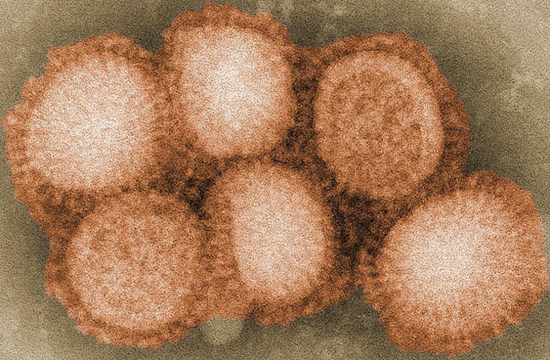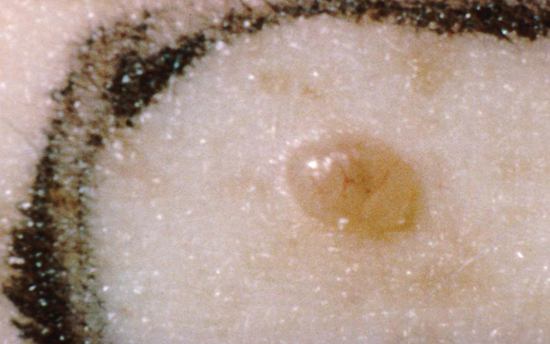
Even if you haven't been watching the news this year (and we know you have), you couldn't miss the horrifying outbreak of Ebola virus in West Africa. But Ebola wasn't the only scary sickness to raise its foul head in 2014; take a tour of other nasty-baddies that attacked the young, the old and...well, anyone, really.
1. Ebola
Of course, we'd be remiss not to kick off with Ebola. The current outbreak of one of the most deadly, and cure-less, viruses known to humans seems to have started in March, possibly when a 2-year-old boy came in contact with an infected bat. From there, the highly contagious disease spread quickly. By Dec. 26, Ebola had killed 7,693 people in West Africa and had spread, in isolated cases, well beyond those borders.
Worst-case predictions by the world's top experts are that the Ebola virus will infect almost a million and a half people by the end of January 2015. How many will die? The death rate is over 50 percent. You do the math.
2. The Flu
2014 kicked off with a nasty influenza season and it's bookending with another one. But back in January, H1N1 - swine flu - was the culprit. Rounding out the year, H3N2 is leading the charge that has so far this season killed 15 children and sent scores to the hospital. The CDC strongly recommends getting flu shots, even though this year's vaccine is only partly effective due to a small difference between the H3N2 in the vaccine and the H3N2 that's making the rounds.
Birds have been striking out with avian flu, too, and the latest strain of the bird killer, around since 2013, finally made its way to U.S. shores in the Pacific Northwest. H7N9 has killed around a hundred people in China, but experts stress that bird flu is not yet transmittable from human to human.
3. Skin Cancer
Credit: National Cancer Institute
Skin cancer rates jumped more than 200 percent from 1973 to 2011, making it the most common kind of cancer diagnosed among U.S. teens and young adults, it was announced in July. It's also the most preventable. Despite warnings from the Office of the Surgeon General to cover up and use sunscreen, every year more than 63,000 melanoma cases are diagnosed in the United States and nearly 9,000 people die from it.
Here are some more alarming numbers: One-third of young white women in the United States uses indoor tanning devices each year. Using a tanning device before age 30 increases the risk of developing melanoma by 75 percent, the Melanoma Research Foundation says.
4. Norovirus
It just wouldn't be a complete year without an outbreak of widespread norovirus-inspired vomiting on a cruise ship and 2014 did not disappoint. Back in January, a Royal Caribbean cruise ship carrying about 3,000 passengers suffered a norovirus outbreak that sickened 626 people. The outbreak was so bad that CDC officials boarded the ship and stayed there, accompanying the ship back to dock in New Jersey.
Norovirus is a tough bugger: Alcohol doesn't kill it, so hand sanitizers are useless; it can live up to a week on objects like doorknobs; it passes through touch, sneezing or consuming tainted food or drink. It also kills 800 people a year in the United States and sickens about 20 million.
Be careful out there.
5. Salmonella
This perennial illness raised its barfy head in 2014 too. Tainted mung bean sprouts felled 87 people earlier in December. Just today, Fisher walnut and pecan pieces were recalled for salmonella concerns. Not even the dogs are safe: A dog chew out of Virginia has tested positive for salmonella and has been recalled.
Even pets can carry the bacterium, which causes diarrhoea, fever and abdominal cramps. Turtles are probably the best-known pet carriers of salmonella, but baby chicks and ducks carry it too. So do bearded dragons, that popular lizardy pet. In April, a mysterious, two-year-long salmonella outbreak that sickened 132 people in 31 states was finally traced to bearded dragons. It's still not clear why some of the lizards transmit the bug; the CDC is still working on that one.
6. Brain-Eating Amoeba
This critter might not be something most of us have to worry about. But hey, it's good to be safe, right? In July, a young girl, Hally Nicole Yust, was doing what kids do when it's hot - swimming in lakes. During one of those outings, an amoeba went up her nose, probably when she accidentally inhaled the lake water. The one-celled organism travelled to her brain, where it consumed her brain cells. Tragically, the girl died.
These amoebae can lurk in warm, moist places for extended periods. Something to think about before swimming in warm watering holes or using a Netipot with your home tap water.






No comments:
Post a Comment
Please adhere to proper blog etiquette when posting your comments. This blog owner will exercise his absolution discretion in allowing or rejecting any comments that are deemed seditious, defamatory, libelous, racist, vulgar, insulting, and other remarks that exhibit similar characteristics. If you insist on using anonymous comments, please write your name or other IDs at the end of your message.